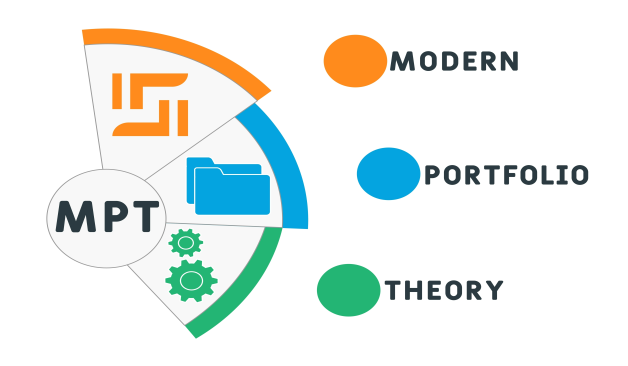
What is Modern Portfolio Theory?
In investing, we often talk about risk and return. Both the terms have a strong connection, and often investors have to find a balance between the two. The ideal case scenario is to find an asset class that will provide a maximum return with the least risk. However, such asset classes are tough to find. An investing model exists which helps you find the right balance - Modern Portfolio Theory. Today, we will discuss it in detail and explain how to use it.
Modern Portfolio Theory
Modern Portfolio Theory (MPT) is an investment framework developed by economist Harry Markowitz in the 1950s. It provides a way to optimize investment portfolios by balancing risk and return. MPT suggests that by diversifying investments across different asset classes, an investor can achieve a higher level of return for a given level of risk or minimize risk for a desired level of return.
The core idea behind Modern Portfolio Theory is that an investor can optimize their portfolio by considering the relationship between risk and return. MPT assumes that investors are risk-averse and seek to maximize returns while minimizing risk. It provides a mathematical framework for determining the ideal mix of assets that will provide the highest expected return for a given level of risk or the lowest risk for a given level of expected return.
Understanding MPT with an example
Let us take an example of an investor to understand MPT - Jay. Jay has a portfolio of stocks and bonds and wants to apply Modern Portfolio Theory to optimize his investments. Here is how he goes about it:
Asset selection: Jay identifies two asset classes for his portfolio - stocks and bonds. Stocks are generally considered riskier but offer higher potential returns, while bonds are considered safer but offer lower returns.
Risk and return analysis: He gathers historical data for both asset classes and analyzes their risk and return characteristics. He finds that stocks have an average annual return of 12% with a standard deviation of 15%, while bonds have an average return of 6% with a standard deviation of 8%.
Correlation analysis: He examines the correlation between stocks and bonds. If two assets correlate +1, it means they move in perfect synchronization. A correlation of -1 indicates they move in opposite directions, while 0 indicates no correlation. The investor finds that stocks and bonds correlate -0.3, suggesting they are negatively correlated.
Efficient frontier: Using the risk and return data, he constructs an efficient frontier, which is a graph showing different combinations of asset allocations that maximize returns for a given level of risk. The efficient frontier helps him determine the optimal mix of stocks and bonds.
Portfolio optimization: Jay considers his risk appetite and investment goals. He decides to target a moderate risk level and aims for an average annual return of 8%. Using the efficient frontier, he identifies a portfolio allocation that achieves this target.
Based on the efficient frontier, Jay finds that an allocation of 60% stocks and 40% bonds is optimal for his desired risk and return. This allocation takes advantage of the negative correlation between stocks and bonds, reducing the overall portfolio risk.
Key assumptions under MPT
Below are some assumptions under MPT that investors must be aware of:
- Investors are rational: MPT assumes that investors are rational decision-makers who aim to maximize their expected return for a given level of risk. They make investment decisions based on the available information and their assessment of the risk-return tradeoff.
- Investors have mean-variance preferences: The theory assumes that investors evaluate investment opportunities based on the mean (expected return) and variance (risk) of the portfolio. Investors seek to maximize expected returns while minimizing portfolio risk, as measured by the variance or standard deviation of returns.
- Asset returns are normally distributed: It assumes that asset returns follow a normal distribution, meaning that the return distribution is symmetrical and bell-shaped. This assumption allows for the statistical measures used, such as mean and variance, in portfolio analysis.
- Returns are stationary and independent: MPT assumes that returns are constant. It means that the statistical properties of returns do not change over time. Also, the returns of different assets are independent of each other, implying that the performance of one asset does not affect the others' performance.
- Investors have a single-period investment horizon: MPT assumes that investors have a single-period investment horizon and make decisions based on the expected returns and risks over that specific period. It does not consider the impact of multiple investment horizons or dynamic portfolio adjustments over time.
Advantages: Why should you learn MPT?
Below are some of the advantages of Modern Portfolio Theory:
Diversification: MPT emphasizes the importance of diversifying investments across different asset classes and securities. By combining assets with low or negative correlations, MPT aims to reduce overall portfolio risk while maximizing returns. Diversification allows investors to spread their risk and potentially enhance their risk-adjusted returns.
Quantitative Approach: MPT is a quantitative approach that uses statistical and mathematical models to analyze investment opportunities. It takes into account factors such as historical returns, volatilities, and correlations to build portfolios. This objective and systematic approach provides a framework for making rational investment decisions, reducing the influence of emotions or biases.
Widely Accepted: MPT is a well-established and widely accepted theory in finance. Its concepts and principles have been extensively studied and used by practitioners, academics, and portfolio managers for several decades. This wide acceptance adds credibility and increases the likelihood of consistent results when applying MPT.
Conclusion
Modern Portfolio Theory offers numerous advantages, as we have seen above. However, it also has limitations and assumptions, such as the reliance on historical data and the assumption of rational investor behaviour. Therefore, you must consider these limitations and tailor the theory to your specific investment goals and circumstances.










